During the Wiki Loves Monuments 2012 photgraphy contest we received quite a few of photos containing watermarks or signatures, which is pretty dumb considering the images are licensed freely (Creative Commons Attribution Share Alike) and they are intended for Wikipedia use, such a watermark will make them less usefull and the free license will allow editors do clean them. Let me quote from Wikimedia Commons why is a bad idea to watermark your uploads:
- Watermarks can be unfree, if they feature a logo or any copyrighted image.
- They may contain copyright statements, which affect the reuseability of the image.
- They detract from the quality of images
- They can negatively influence the neutrality of images, or be considered advertising, and cannot be used on certain projects
- Images with watermarks are far less likely to be used
- Watermarks will be, in most cases, removed anyway by image editors - uploading a watermarked version only creates a lot of extra work for other volunteers
But Wikipedia is an inclusive project, your contributions are accepted, even if defective, with watermarks making them less useful. Of course, you do it on your own risk, they won't be nominated as quality images and won't receive any prize. You may get contacted by an editor, asking for a clean verion, you can help or not.
If you are an editor wanting to clean such pictures, Wikipedia also has some help for you, but this help is geared more to Photoshop users, with the GIMP part focusing more on loseless JPEG editing than watermark cleaning. If the cleaning is bad, the loseless part is less important, methinks, so this is why I will show here a few GIMP techniques. I am using for demonstration real files, submitted by a participant, Antonius Plaian in the Romanian Wiki Loves Monuments 2012 contest.
Crop
The easiest way to remove an unwanted part of the image is by cropping it, of course, this will work only if the watermark/signature does not cover an important part of the image, like this Raibow over Timișoara:
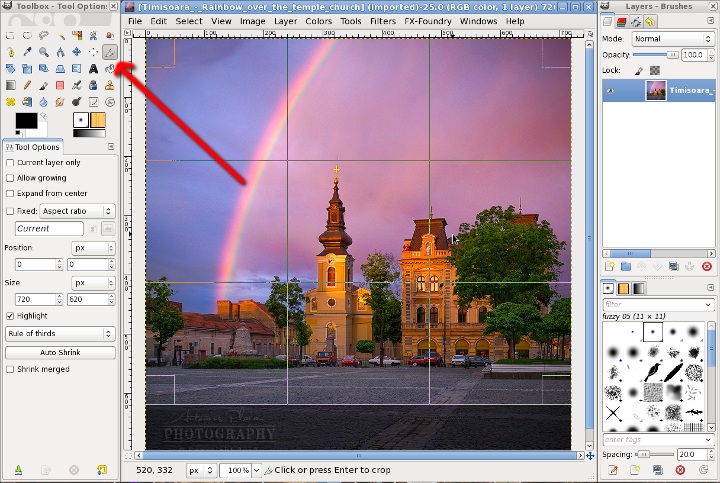
There are downsides to cropping, some (hopefully unimportant) data is lost and the composition is afected, the image won't look as intended any more. Is simple and sometime may work.
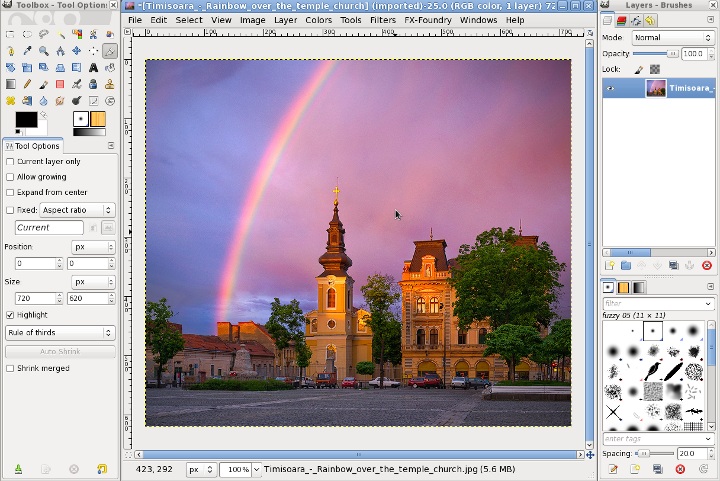
However, if cropping does not work, we can use more advanced techniques.
Content-aware filling
When introduced in Photoshop CS5, content aware filling was seen by some as a kind of holy grain, but GIMP users had access to a similar feature long before, in the form of the Resynthesizer plug-in. It work best when the area covered by the watermark is seamless, like this Oradea Town Hall picture. Start with the lasso, making a free selection around the watermark:

I am using an old development GIMP version here, 2.7.1 (the latest available for my Fedora 14 desktop) so for me the plug-in is located in Filters > Enhance > Smart remove selection...

Apply it:
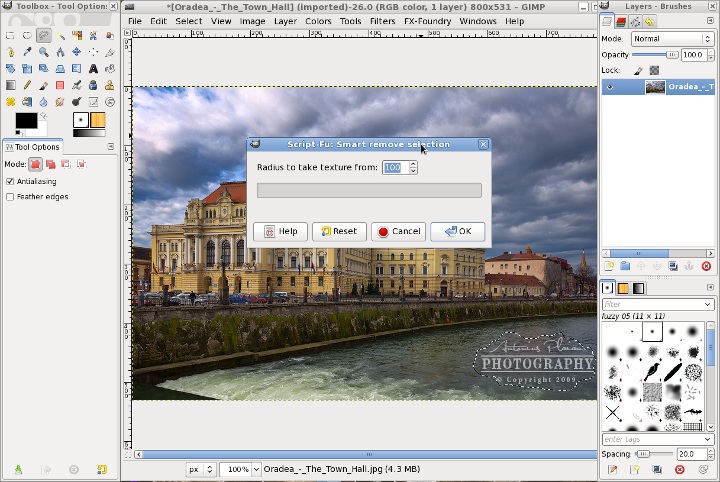
And the resulting image may be clean enough, in this case I find it acceptable.
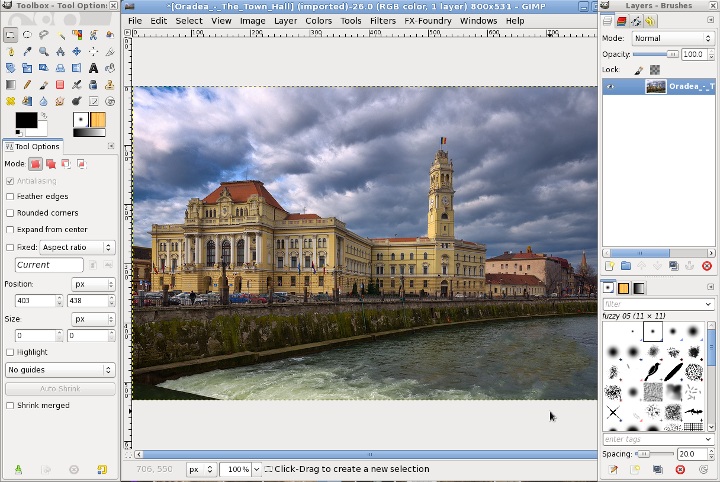
Surgery
When the background under the watermark is more complex, content-aware filling won't be as effective, we have to fall back to image surgery, like I did for this Timișoara Catholic Dome image.
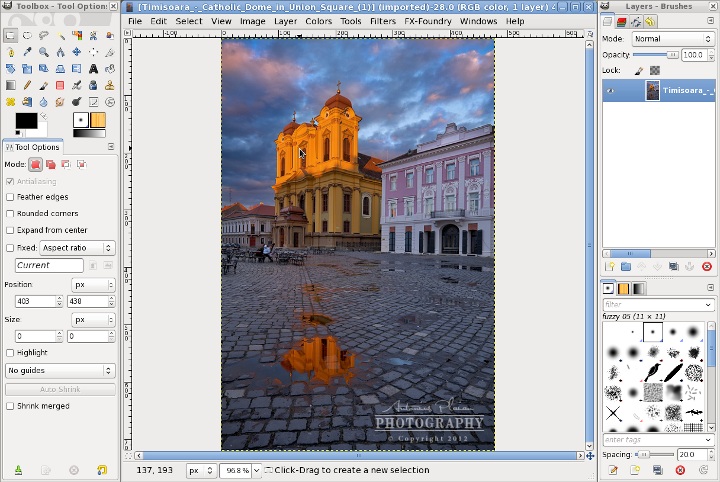
Zoom in, select the Clone stamp tool, with a small fuzzy brush and start copying image areas over the watermark (Press the Ctrl key and click to define a sorce area and then just paint). When you think the result is not smooth enough, use the similar Healing tool. You may need a lot of patience and attention to detail.
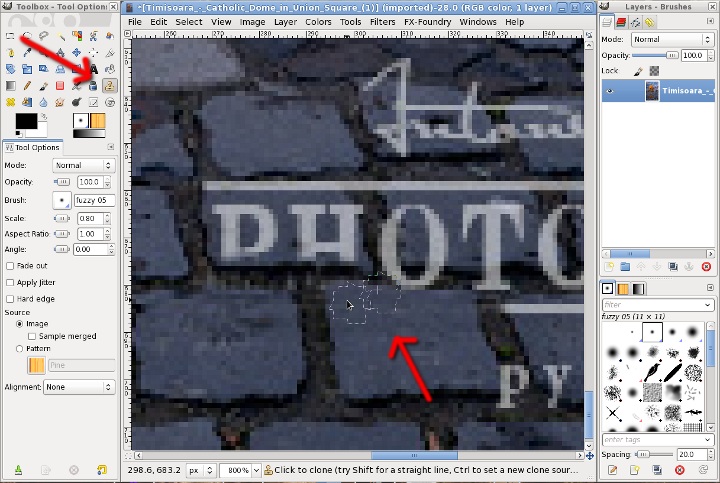
While this technique is the most labor-intensive, it also produces the best results, after a bit of experience gained, you will prodice the best possible results.
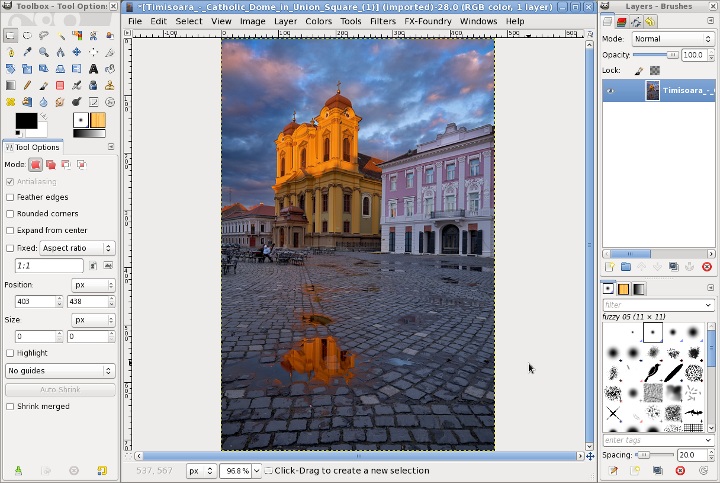
Failures
Unfortunately, is not all roses, sometime the image author choose to put the watermark covering important parts of the image, as the photographer did with this Bega Canal picture.
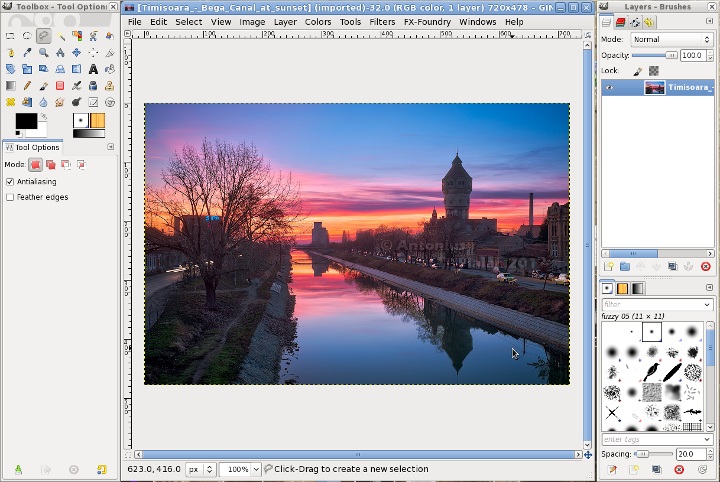
Of course you can try removing it the tools mentioned above (content-aware filling or clone stamp), but the result will be of poor quality, I don't think they worth the effort, just ignore and not use them, the author succeded in protecting the image by making it useless.
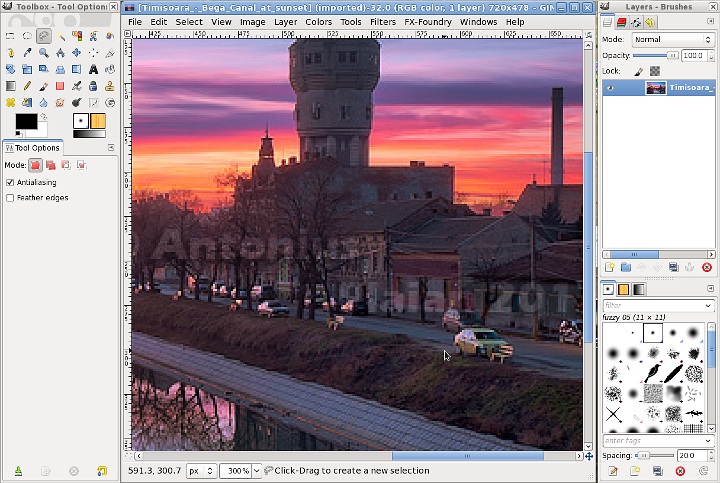
Morals and law
As I said before, those images are freely licensed, so their modification is allowed by the license and the law and the attribution clause is fullfilled with its re-location to the image description page and/or image metadata.
If the reader is a photographer releasing his pictures under proproetary licenses and is offended by this article as a means to circumvent his protection, I can tell him that is a bad idea: as shown above, from a technical point, the only effective watermarks are those which destroy the image. Most of the good photographers of the workd do not watermark their images and from a copyright point of view, your image is protected even if not watermarked. Only beginners use watermarks, but not for protection but as a way to make their name known. Myself, I don't watermark my pictures, only in some rare cases when is a high potential to have them misused with no attribution, I add a small unobtrusive signature to make the source known, but only when I release the images under a non-free license, which is very rare.


 GIMP Watermark removal
GIMP Watermark removal
